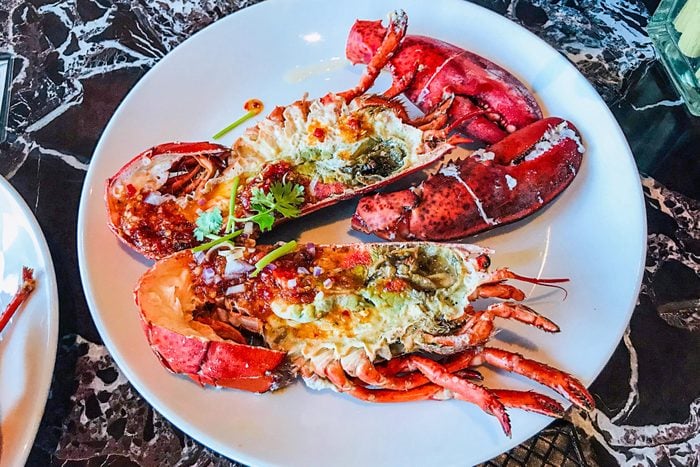Can You Eat the Green Stuff in Lobster?
Updated: Sep. 20, 2023

Tomalley may be a turnoff to some, but to others, it's a highly sought after flavor bomb. Is it safe to eat, though?
As you strap on a bib and eagerly prepare to take your first bite of succulent lobster, something catches your eye. A trail of green goo in the body cavity. Oh no, is it spoiled? Is it a pesto sauce? No, it’s called tomalley—and many New Englanders actually consider it a delicacy.
What Is Tomalley?
Tomalley may look slightly offputting, and learning that it’s part of the lobster’s digestive tract may not do much to initially change your mind. The soft, green, paste-like substance is the animal’s pancreas and liver—but it doesn’t contain remnants of undigested food and waste, like the vein you remove from shrimp.
Is Tomalley Safe to Eat?
This isn’t an easy question to answer, as there are a lot of variables to factor into your decision-making.
In many parts of the world, tomalley is known for its rich, concentrated flavor. It can be enjoyed alongside the tail meat (lobster tails are easier to make than you’d think), spread onto a crusty piece of bread as a pate, mixed into a batch of lobster rolls, or reserved to flavor soups and stews. Lobster bisques and lobster consommé often include tomalley.
However, that doesn’t necessarily mean that you should eat it—and certainly not frequently. Studies show that the tomalley can accumulate contaminants found in the environment, including such toxins as polychlorinated biphenyl (PCBs), dioxins, PFOA and mercury. As such, the Maine Center for Disease Control & Prevention says that children and women who are or may become pregnant should entirely avoid consumption.
It’s also important to avoid eating tomalley during red tides, also called harmful algal blooms, as this can contaminate tomalley and lead to paralytic shellfish poisoning.
As such, tomalley should only be consumed in moderation if you don’t fall into one of those higher-risk profiles and you maintain awareness around ecological events like a red tide.
